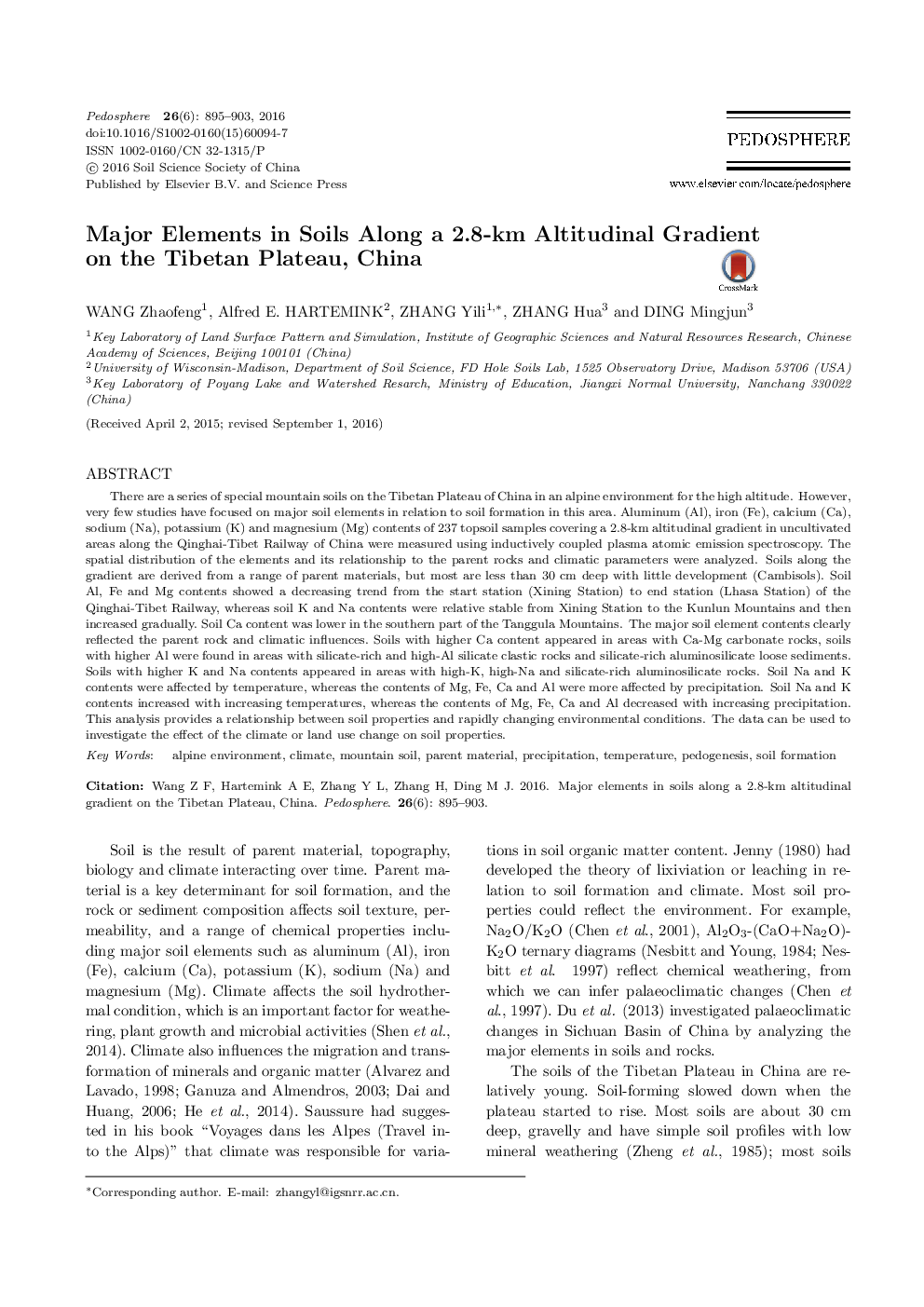| Article ID | Journal | Published Year | Pages | File Type |
|---|---|---|---|---|
| 4581116 | Pedosphere | 2016 | 9 Pages |
There are a series of special mountain soils on the Tibetan Plateau of China in an alpine environment for the high altitude. However, very few studies have focused on major soil elements in relation to soil formation in this area. Aluminum (Al), iron (Fe), calcium (Ca), sodium (Na), potassium (K) and magnesium (Mg) contents of 237 topsoil samples covering a 2.8-km altitudinal gradient in uncultivated areas along the Qinghai-Tibet Railway of China were measured using inductively coupled plasma atomic emission spectroscopy. The spatial distribution of the elements and its relationship to the parent rocks and climatic parameters were analyzed. Soils along the gradient are derived from a range of parent materials, but most are less than 30 cm deep with little development (Cambisols). Soil Al, Fe and Mg contents showed a decreasing trend from the start station (Xining Station) to end station (Lhasa Station) of the Qinghai-Tibet Railway, whereas soil K and Na contents were relative stable from Xining Station to the Kunlun Mountains and then increased gradually. Soil Ca content was lower in the southern part of the Tanggula Mountains. The major soil element contents clearly reflected the parent rock and climatic influences. Soils with higher Ca content appeared in areas with Ca-Mg carbonate rocks, soils with higher Al were found in areas with silicate-rich and high-Al silicate clastic rocks and silicate-rich aluminosilicate loose sediments. Soils with higher K and Na contents appeared in areas with high-K, high-Na and silicate-rich aluminosilicate rocks. Soil Na and K contents were affected by temperature, whereas the contents of Mg, Fe, Ca and Al were more affected by precipitation. Soil Na and K contents increased with increasing temperatures, whereas the contents of Mg, Fe, Ca and Al decreased with increasing precipitation. This analysis provides a relationship between soil properties and rapidly changing environmental conditions. The data can be used to investigate the effect of the climate or land use change on soil properties.
